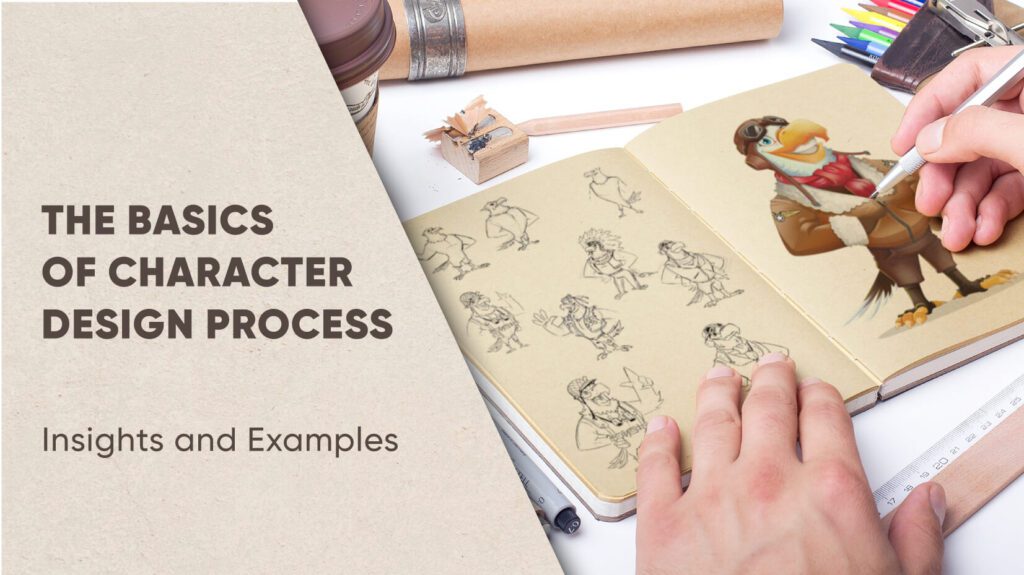The creative process of character design in video games involves several stages, from initial concept and sketching to the final in-game models. The concept stage involves creating descriptions and visual briefs outlining character traits and backstory. Sketches of rough ideas are then created with minimal detail in black and white to narrow down designs for further development. The refining stage involves adding more detail, incorporating colors, textures, and accessories that give each character a unique look. 3D modeling, rigging, texturing, shading, and animation follow the refining stage. Character design continues to evolve, offering greater creative opportunities for developers and artists.
From Sketches to Spectacle: The Creative Process of Character Design in Games
Introduction
Video games have come a long way since Pong, and the creative process that goes into the design of characters has evolved right alongside them. Today, character design is an art in itself, with dedicated artists who specialize in creating memorable and engaging characters. This article will explore the creative process of character design in games, from initial sketches to final in-game models.
Concept and Sketching
The first step in the character design process is the conceptualization stage. This is where the game designers work with the art team to come up with rough ideas of what the characters will look like. The concept stage often involves creating short descriptions or visual briefs that outline the character’s backstory, personality, and traits. From there, the concept artists begin sketching rough idea sketches. It is in these sketches that the initial design ideas come to life.
Character design sketches can be very rough at this stage, with minimal detail included. Often the sketches are created in black and white, with no color or shading, to keep the focus solely on the design. The primary goal of this stage is to explore ideas quickly and efficiently and narrow down the best designs for further development.
Refinement and Iteration
Once a few promising designs have been identified, the art team begins to refine these initial sketches. This stage involves adding more detail to the design, including color, shading and texture. It is also when the design team begins to experiment with different design elements, such as clothing, weapons, and accessories that help to give each character their unique look.
At this stage, the artists will create multiple iterations of the chosen designs, making small changes and refining details until the character is perfect. This process can take several weeks or even months and often involves input from multiple members of the development team.
3D Modeling and Rigging
Once the design has been finalized, the next step is to create a 3D model of the character. This is typically done using 3D modeling software such as Maya or 3D Studio Max. The 3D model allows artists to view the character from any angle and make any necessary adjustments to the design.
Once the 3D model has been completed, it then needs to be rigged. Rigging is the process of creating a control system for the character that allows it to be animated. This involves creating a skeleton for the character and assigning various movement controls to its bones. Once the rigging is complete, the character is ready to be animated.
Texturing and Shading
Once the character has been rigged, the next step is to add textures and shading. This involves adding a range of color and detail to the character’s surfaces, including skin, clothing, and accessories. This process is often done using texture maps, which allow artists to create complex patterns and gradients that give the character depth and dimension.
The shading process involves creating complex lighting effects that give the character’s surfaces a realistic appearance. This process can include adjusting the character’s specular highlights, adding reflections, and altering the level of ambient light in the scene.
Animation
The final step in the character design process is animation. This involves creating a range of movements and actions for the character that bring it to life within the game world. The animation process is typically done using motion capture technology, which allows artists to capture the movements of real actors and transfer them onto the character.
Once the animation has been completed, the character is ready to be added to the game world. This involves integrating the character’s model and animation into the game engine, where it can be controlled and interacted with by the player.
Conclusion
Character design is an essential part of the video game development process. From initial sketches to final in-game models, character design involves a range of different processes, including concept development, 3D modeling, rigging, texturing, shading, and animation. Through these processes, artists can bring characters to life that are engaging, memorable, and add an extra dimension of fun to the gaming experience. With the constant evolution of gaming technology, character design is set to continue to expand, offering even greater creative opportunities for developers and artists alike.
